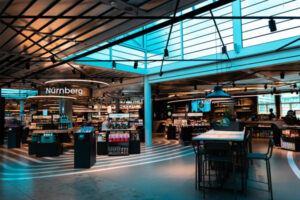PropTech Column by Peter Tonstad
Shopping centers have always been marketplaces in the physical world, with the first mention of “digital malls” dating back to the early 2000’s. Despite the passing of 20 years since the concept was introduced, there are no true digital malls live anywhere in the world today. In 2020 however, the long-term vision of shopping centers as fully integrated digital marketplaces finally has begun to materialize.
This gap between vision and realization is in no way unique to the shopping center industry. Many digital ideas created at the beginning of the millennium have yet to be fully realized. The shopping center industry has been testing and launching many pieces of the digital mall puzzle, but for those who understand the power of combining physical and digital retail to outperform either disconnected alternative, the next few years will be critical to truly becoming online marketplaces.
We currently divide e-commerce initiatives at shopping centers into the three following categories:
1. Generic product search & affiliate links
The product content is provided to inspire purchases, and is typically based on scraping of retailer websites, Google shopping feeds or similar. Links from products lead to the retailer’s e-commerce pages where product may be purchased. If an affiliate agreement with the retailer is in place, when a consumer on the shopping center’s website searches for and clicks through to a retailer website the shopping center receives a “finders,” or affiliate fee typically in the range of 3 to 10% of the purchase total.
2. Curated products
A team at the shopping center will select a certain number of products from their retail tenants to feature on the shopping center website. Typically, the product selection is between 100 and 1,000 products. Upon the consumer placing an order of one or multiple products, from one or several retailers, the shopping center team will facilitate the collection of the items from the stores, arrange for centralized pick up or home delivery, and facilitate settlement between consumer, mall, and retailer.
3. Fully integrated digital marketplace
Fully integrated digital marketplaces have information on all products in the shopping center including inventory data, and consumers can order and pay for a multi retailer shopping basket–either for pick up or delivery.
Hence, there are three main challenges to shopping centers becoming fully integrated marketplaces: Firstly, complete product information with store level inventory data by location; Secondly, fulfilment and settlement of a multi retail tenant basket including returns; and thirdly, fulfilment (pick-up & delivery).
At Placewise we are working through these challenges together with our clients and their tenants, and by the end of Q1 this year we will launch what we believe is the world’s first complete e-commerce integrated, shopping center marketplace.
Our solution includes the following: product feed integrations including store level inventory data from at least 50 % of all shopping center tenants; an end-to-end marketplace platform with multi retailer basket and check out; a selection of global and local payment options, with settlement between consumers and shopping center, and secondly between shopping center and tenants; mall fulfilment service for bundling orders for pick-up and delivery, and management of returns.
The value proposition to the consumer is convenience, for the tenants it is incremental sales. The core of driving consumers to this offering is the malls current consumer database. This particular group of malls has a digital reach of more than 50% of their footfall in the physical mall. The database, in combination with organic web traffic and paid traffic, will create a very attractive shopper funnel for all tenants involved.
Our target for our respective clients is to deliver 10% of all sales at the shopping center through the digital marketplace within three years. When that is achieved, the shopping centers are perfectly positioned for the long-term future by leveraging their local position and consumer as well as retailer relationships to create an optimal combination of online and on-location shopping experience. We can’t wait to see that happen.






